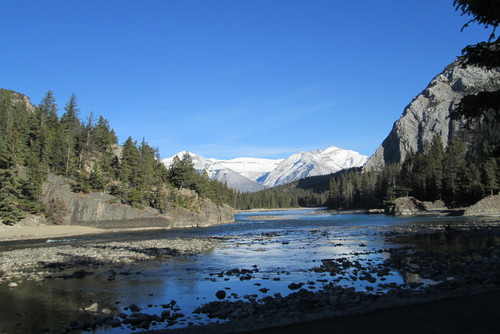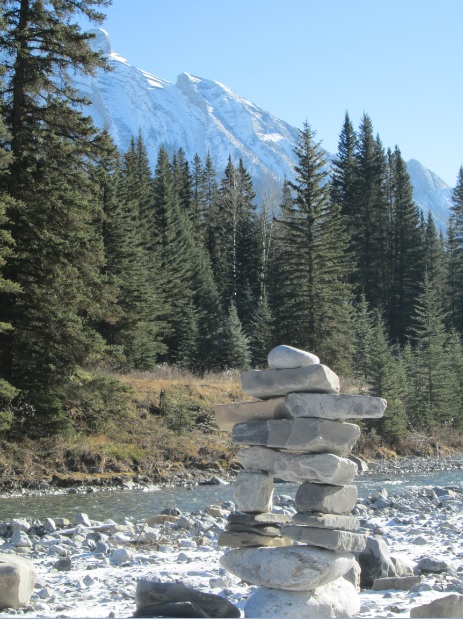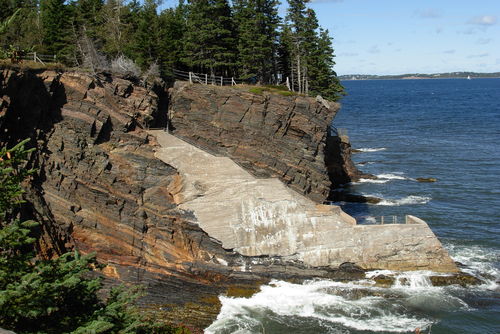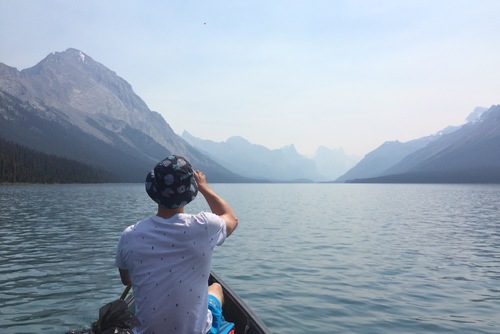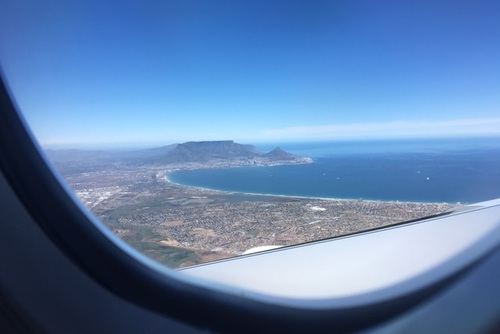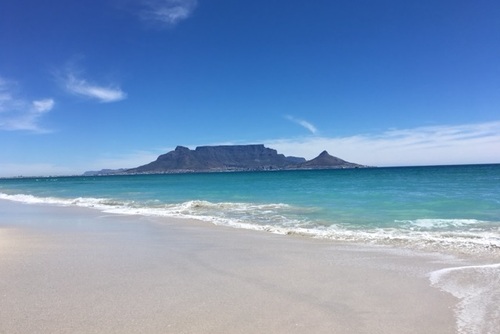Travelling by rail is arguably the best way to travel and it is definitely the best way to travel if you are not in any particular hurry. Certainly it is the most romanticised method of travel. As far as I am aware no epic sagas have ever taken place on a plane, my apologies to Samuel L. Jackson
The railway has played an important part in the history of Canada. The settlement of the Canadian west was aided immensely by the vested interest of railway companies. Canada is big, walking or driving across it takes a long, long time. This is particularly true if where you’re going has no roads and if cars have not been invented yet. These two factors conspired to make railways both very popular and extremely profitable.
Historically, the Canadian west has been abundant in resources while the east of the country is full of industries in demand of those resources. Getting those resources across the prairies required a herculean effort. As a condition for its entry into the Canadian Federation in 1871, British Columbia demanded a transport link to the east.
When they had asked for a connection with the east the government of British Columbia had intended for the creation of a wagon road, but Prime Minister John A. Macdonald instead proposed a railway. Construction of the Canadian Pacific Railway began in 1881 with the first spike being driven in Bonfield, Ontario. A scant six years later in 1887 the first official train arrived in what is now Vancouver.
The genius of the men who plotted the Canadian Pacific Railway is not to be found in the completion of the project. That victory belongs to the workers who laboured to traverse the Canadian wilderness in six short years. No, the genius of the men who envisioned the railway can be found in their long term thinking. They had built a railway through a massive portion of the world where people who would have had need of a railway did not live and so, they decided to make their railway even more valuable by importing people to live beside it.
As a part of the contract the Canadian Pacific Railway Company was awarded 100,000 square kilometres of land. The Canadian Pacific Railway Company duly embarked on chartering some boats and offered land and transport to families in Europe to come and settle the Canadian Prairies.
By doing this they ensured that a demand would always exist for their shiny new railway. The people that had settled the prairies had to live near to the railway in order to have any link to the world. It is here that the true Machiavellian genius of the minds that devised the Canadian Pacific Railway can be seen.
Winnipeg, Manitoba saw its population explode from 25,000 people in 1891 to more than 179,000 in 1921, a rise which coincides with the arrival of the Canadian Pacific Railway. Saskatchewan, Manitoba’s neighbour to the west, saw it’s population rise sharply too as a direct result of the arrival of the railway. Given the importance of the train to the history of Canada it seems somewhat fitting that we spent some time on one during our trip across the country.
It takes seventeen hours to get from Montreal to Moncton by train. Before I went to Canada the longest that I had ever spent on a bus was when I went from Dublin to Killarney, a journey that took six hours. Before Canada this, to me, was a long journey. After Canada I find six hours to be entirely reasonable and journeys of three hours or less are barely worth talking about.
Having completed a thirteen hour bus trip from Banff to Jasper the thought of a seventeen hour train journey was not as daunting as it may seem. After all, what’s four hours between friends? It may not have seemed like much at the time but in reality it took longer to get from Montreal to Moncton than it did to get from Dublin to Vancouver and that is including a three hour layover in London.
My girlfriend is blessed with the ability to turn sleep on and off like a tap. She can sleep when she likes, for as long as she likes, wherever she likes. I, on the other hand, am unable to sleep while in transit for anything more than half an hour. Not only did I spend sixteen and a half hours of the overnight train journey wide awake, I also spent them alone, as my travelling companion was asleep with her head under a blanket.
Our journey took us out of Montreal and then through north east Quebec. As the journey took place at night, I can tell you very little about Quebec outside of Montreal. What I can tell you is that there is a place called Saint-Louis-du-Ha! Ha! a place that I now very much want to visit based on name alone.
As the train sped on through the darkness I tried to pass the time. I read, I stared at the back of the seat in front of me, I contemplated ‘accidentally’ waking Anna up and interspersed all of this with futile attempts to sleep. We had left Montreal at 5pm so it was in a ragged, tired and agitated state that I found myself in Campbellton, in the Province of New Brunswick at 7am the following morning.
As the train idled at the station in Campbellton the dawn was beginning to break over New Brunswick. It was now early December and the deep, darkness of a winter’s night had grown paler and was changing to an orange hue as the sun began to ascend over the Chaleur Bay.
As the train pulled out from the station the sun had climbed high enough to illuminate rolling waves and circling gulls. With a tired smile all agitation left me as I realised that I was now looking out at the sparkling waters of the Atlantic Ocean. I had left Vancouver a few weeks earlier with this moment in my mind. I had made it from sea to sea.
On any morning Campbellton would have been picturesque but set against the day that was now breaking it was simply glorious. Neat, detached wooden houses sat amidst rolling hillocks that bristled with wild, overgrown grass that swaying back and forth in the breeze from the bay. Campbellton dates from the 1700’s and age has given the town an eternal feeling. I could tell just from looking at it that this was a place where lives had been lived.
The wind would howl and drive cold, stinging rain against rattling window panes. The alkaline air of the salty sea would chip paint and the moisture would warp floorboards, but the people of Campbellton had endured it all and would continue to endure it regardless. Life would go on as it always had. Campbellton represented shelter from the storm and comfort amidst the wild. I would like to live somewhere like Campbellton.
As the train trundled past Campbellton it followed the coastline and I began to get the sinking feeling that by overlooking New Brunswick we had made a huge mistake. Occasionally the bare and windswept coast would be swallowed by thick forest that I would eagerly peer into in the hope that I would see a moose through a gap in the trees, I had no such luck.
Sometimes, if we are very lucky we find a place in the world that the sight of it resonates with us. It is a feeling beyond the mere appreciation of natural beauty; it is something far more fundamental and transcendent, as if something in the very fabric of our being has recognised a comfortable and familiar space, a landscape that mirrors the soul.
It is wonderful and it is calming and it feels as if this place was created for you and for you alone. While a train full of people may have passed along that stretch of coastline outside of Campbellton on that Saturday morning I felt as if I was the only one who truly saw it.
The image of that glorious, winter-bright morning, which was perhaps more bright and clear than any other morning that I have ever experienced, that morning, from the breaking dawn on the Chaleur Bay to the fleeting glimpses of white-capped waves rolling into shore, seen from a train travelling over 100km an hour is one of the most treasured memories that I took home from my entire Canadian adventure.
By Declan Brennan
If you enjoyed reading this experience you might want to purchase Declan's book; From Sea to Sea: A Year of Work and Travel in Canada available on Amazon. The ebook is a travelogue of Declans journey across Canada and includes information about Vancouver, Victoria, Seattle, Calgary, Edmonton, Toronto, Montreal, Moncton and Halifax.
Related Pages
- Tours in Canada
- Gap Year in Canada
- Seasonal Work in Canada
- Volunteer Opportunities in Canada
- Paid Internships in Canada
- TEFLCourses in Canada

